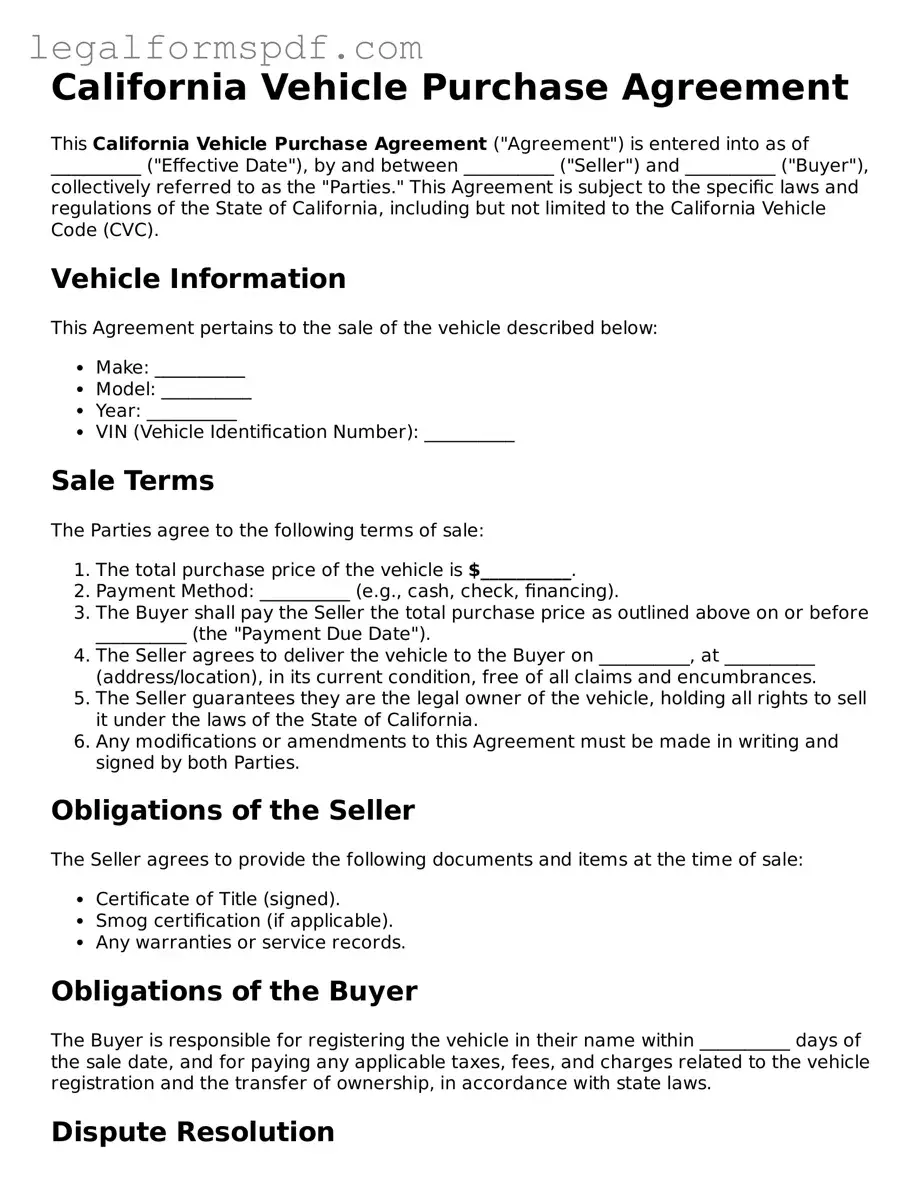California Vehicle Purchase Agreement
This California Vehicle Purchase Agreement ("Agreement") is entered into as of __________ ("Effective Date"), by and between __________ ("Seller") and __________ ("Buyer"), collectively referred to as the "Parties." This Agreement is subject to the specific laws and regulations of the State of California, including but not limited to the California Vehicle Code (CVC).
Vehicle Information
This Agreement pertains to the sale of the vehicle described below:
- Make: __________
- Model: __________
- Year: __________
- VIN (Vehicle Identification Number): __________
Sale Terms
The Parties agree to the following terms of sale:
- The total purchase price of the vehicle is $__________.
- Payment Method: __________ (e.g., cash, check, financing).
- The Buyer shall pay the Seller the total purchase price as outlined above on or before __________ (the "Payment Due Date").
- The Seller agrees to deliver the vehicle to the Buyer on __________, at __________ (address/location), in its current condition, free of all claims and encumbrances.
- The Seller guarantees they are the legal owner of the vehicle, holding all rights to sell it under the laws of the State of California.
- Any modifications or amendments to this Agreement must be made in writing and signed by both Parties.
Obligations of the Seller
The Seller agrees to provide the following documents and items at the time of sale:
- Certificate of Title (signed).
- Smog certification (if applicable).
- Any warranties or service records.
Obligations of the Buyer
The Buyer is responsible for registering the vehicle in their name within __________ days of the sale date, and for paying any applicable taxes, fees, and charges related to the vehicle registration and the transfer of ownership, in accordance with state laws.
Dispute Resolution
Any disputes arising out of this Agreement shall be resolved through mediation, and if necessary, legally resolved in the jurisdiction of the State of California.
Signatures
This Agreement is effective upon the signatures of both Parties below.
Seller's Signature: __________ Date: __________
Buyer's Signature: __________ Date: __________
